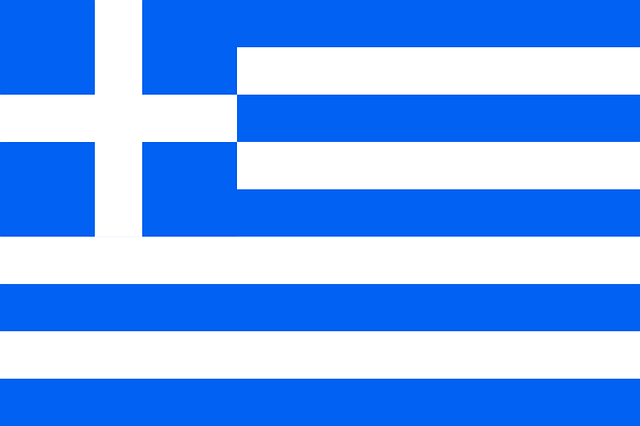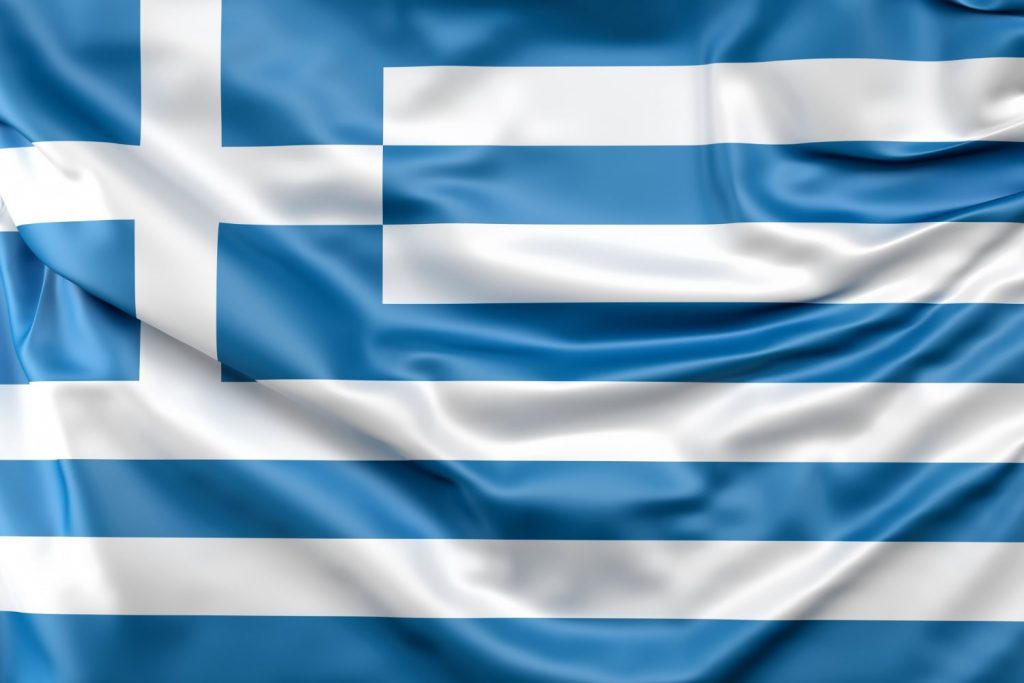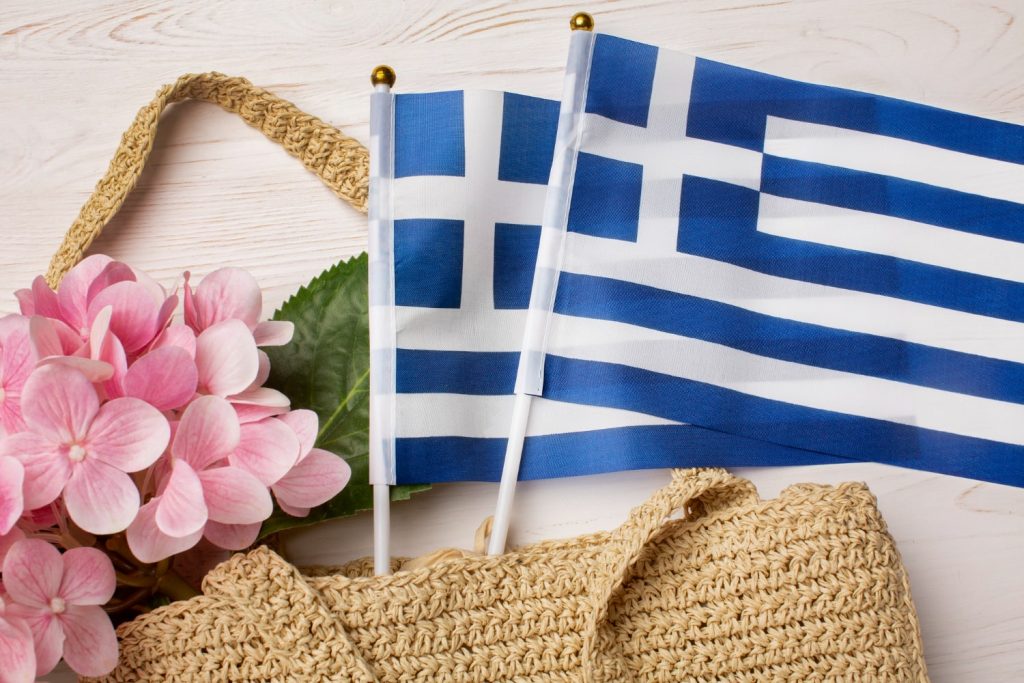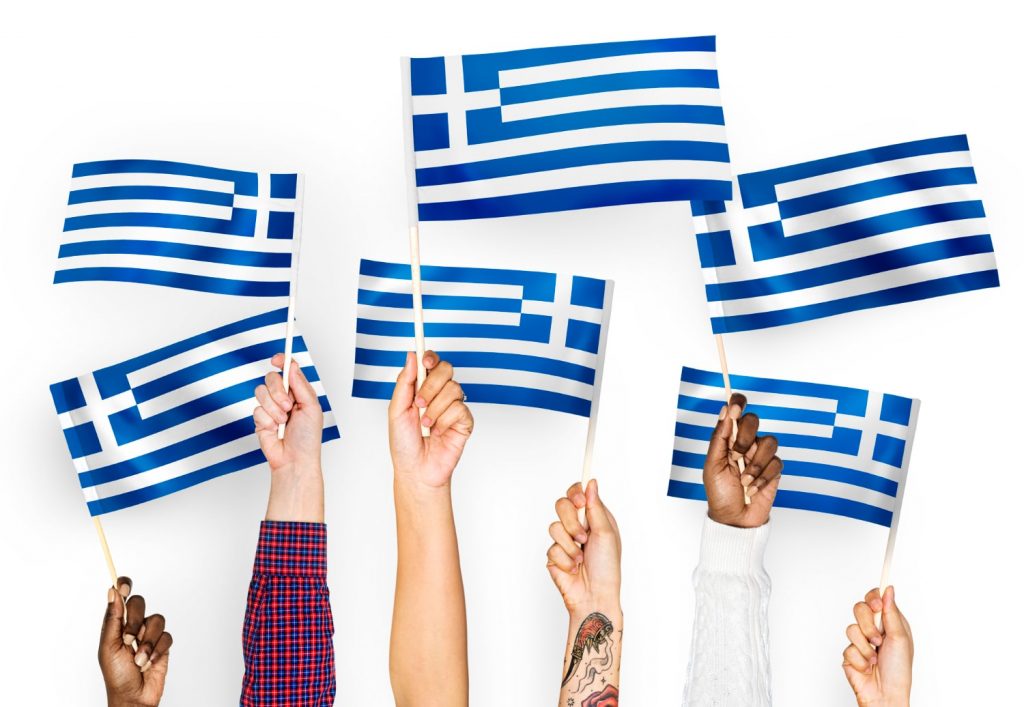Flag of Greece

Greek flag
- Official approval of the flag: The year 1978
- Flag emoji: 🇬🇷
- Period: Modern flags
- Type of flag: Flags of countries • Flags of continental countries
- Belonging to the continent: Europe
- Colors on the flag: white • blue
- Emblem on the flag: Without emblem
Greece is located in southeastern Europe, on the Balkan Peninsula, bordering Albania, North Macedonia, Bulgaria, and Turkey. Its capital is Athens. The area is 131,957 km², the population is about 10.4 million people. The official language is Greek. Greece is the birthplace of ancient civilization, philosophy, and the Olympic Games, which has earned it an important place in world culture. The main ethnic group is Greek, with minorities of Albanians, Macedonians and Bulgarians.
The flag of Greece, known as the “blue and white flag” or “flag of the Nine Stripes”, is the official symbol of the Hellenic Republic. Its design with nine horizontal stripes and a white cross in the upper left corner symbolizes the struggle for independence, the Orthodox faith, and the country’s centuries-old cultural heritage.

History of the Greek flag
The Greek flag has a multifaceted history related to the national struggle for independence from the Ottoman Empire and the formation of the modern Greek state.
The origin of the flag
- XIX century: During the Greek Revolution of 1821, the flag with blue and white colors was first used as a symbol of the struggle for freedom. These colors were chosen because of their symbolism in Greek culture.
- 1822: The first official flag was approved by the National Assembly of Greece, which had a similar design to the modern flag, but was used exclusively on ships.
Modern times
1978: The blue and white flag with nine stripes became the official national flag of Greece, replacing the previous version, which was used mainly in government institutions.

Colors of the flag of Greece
Meaning of the flag colors
The flag of Greece has a rich symbolism that reflects its historical and spiritual heritage:

- Blue color:
- Symbolizes the sea that surrounds Greece and the clear sky.
- It represents freedom, harmony and national identity.
- White color:
- It represents the purity of the struggle for independence.
- Symbolizes the waves of the sea that witnessed the Greek struggle for freedom.
- Cross:
- The white cross in the upper left corner symbolizes the Orthodox faith, which is an important part of Greek culture.
- Nine stripes:
- Symbolize the nine syllables of the Greek Revolution’s motto: “Ελευθερία ή Θάνατος ‘ (’Freedom or Death”).
- The alternating blue and white stripes emphasize the harmony between the sea and the sky.
Color codes
The official color shades of the Greek flag are approved for accurate representation:
- Blue:
- RGB: (13, 94, 175)
- HEX: #0D5EAF
- CMYK: (93, 46, 0, 31)
- Pantone: 286 C
- White:
- RGB: (255, 255, 255)
- HEX: #FFFFFF
- CMYK: (0, 0, 0, 0)
- Pantone: White

Format and proportions
The Greek flag has a unique design with horizontal stripes and a cross, which distinguishes it from many other national flags.
Flag proportions
The official proportions of the flag are 2:3, where the width of the flag is equal to 1.5 times its height.
Arrangement of the elements
- The flag consists of nine horizontal stripes beginning and ending in blue.
- In the upper left corner is a white cross on a blue square field, the height of which is one third of the flag’s height.

Interesting facts about the flag of Greece
- Maritime influence: The Greek flag is often called the “flag of the sea” because it was originally used on naval vessels.
- Revolutionary motto: The phrase “Ελευθερία ή Θάνατος ” became a key slogan of the Greek liberation movement and is reflected in the nine stripes of the flag.
- Flag holidays: Greek Independence Day, March 25, is also the day of the national flag, when it is raised in all state institutions.
The flag of Greece is an important symbol of its rich history, struggle for freedom and national unity. Its design reflects the connection with nature, spirituality and the desire for peace and harmony that are an integral part of Greek culture.
